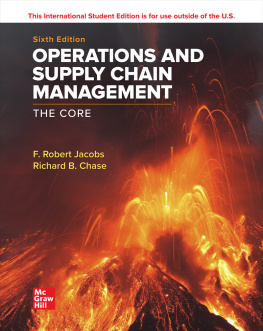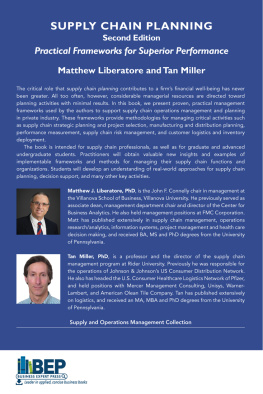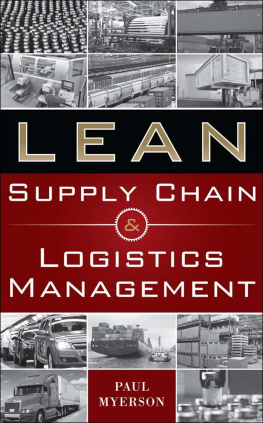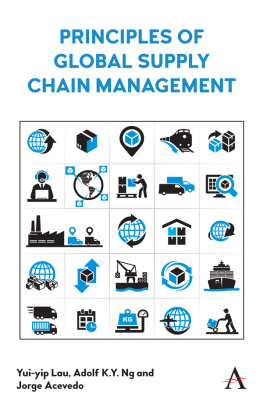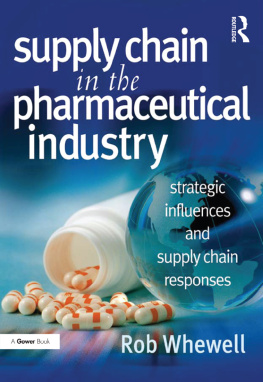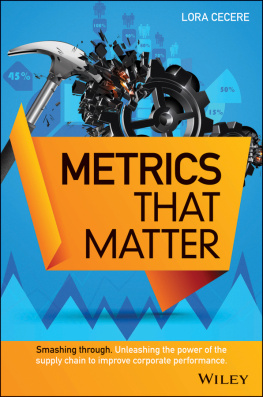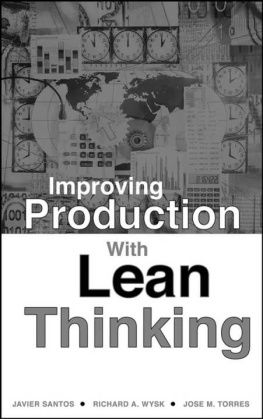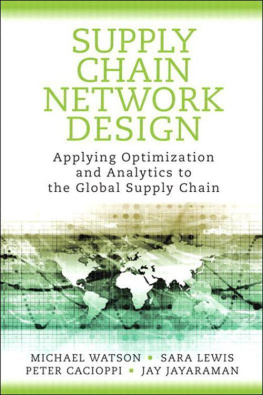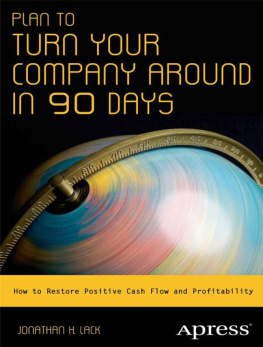
1 + 1 = 100
1 + 1 = 100
Achieving Breakthrough Results Through Partnerships
Rick Pay

1 + 1 = 100: Achieving Breakthrough Results Through Partnerships
Copyright Business Expert Press, LLC, 2017.
All rights reserved. No part of this publication may be reproduced, stored in a retrieval system, or transmitted in any form or by any meanselectronic, mechanical, photocopy, recording, or any other except for brief quotations, not to exceed 400 words, without the prior permission of the publisher.
First published in 2017 by
Business Expert Press, LLC
222 East 46th Street, New York, NY 10017
www.businessexpertpress.com
ISBN-13: 978-1-63157-499-3 (paperback)
ISBN-13: 978-1-63157-500-6 (e-book)
Business Expert Press Supply and Operations Management Collection
Collection ISSN: 2156-8189 (print)
Collection ISSN: 2156-8200 (electronic)
Cover and interior design by Exeter Premedia Services Private Ltd.,
Chennai, India
First edition: 2017
10 9 8 7 6 5 4 3 2 1
Printed in the United States of America.
This book is dedicated to my wife, who encouraged me to write it and gently pushed me to complete it. It is also dedicated to Paige McKinney, who helped improve my thinking on the subject, patiently edited the work, and made it a much better book.
Abstract
1 + 1 = 100 guides readers through developing, implementing, and maintaining close relationships within their own company (with employees, design engineering, product development, sales and marketing, operations, and supply chain) as well as outside (with suppliers, customers, and the community). By avoiding overreliance on cost reduction measures and instead developing partnerships, the company and its partners can achieve world-class profitability and cash flow.
For more than 30 years, the focus in industry has been to improve productivity and cut costs using approaches like Lean Thinking, World Class Manufacturing, Reengineering, Strategic Supply Chain strategies, and offshoring. Unlike the techniques that these process improvement methods espouse, partnerships go beyond correcting mistakes or solving problems; they entail looking at the big picture and building on each partners strengths, making breakthrough results possible for all stakeholders in the relationship.
1 + 1 = 100 speaks directly to operations and supply chain executives in manufacturing and distribution environments, but the concepts are essential for all members of the executive team in any industry that has an operations component and suppliers.
Keywords
accountability, agility, business value, capabilities, collaboration, commitment, competitive advantage, continuous improvement, cost reduction, culture, distribution, implementation, innovation, JIT, key performance measures, manufacturing, memo of understanding, metrics, operations, operations discipline, partnership, problem solving, process improvement, productivity, quality, reshoring, results, strategy, supplier, supplier partner program, supplier score cards, supply chain, sustainability, teams, teamwork, total cost of ownership, trust, vendor managed inventory, vision
My first view of a partner was watching an old black-and-white television and the great western shows of the age. The Lone Ranger had Tonto. Roy Rogers and Dale Evans were partners. Gabby Hayes seemed like a perpetual candidate for whoever needed a partner at the moment. They pronounced it pardna.
There were nonhuman partners. Rusty and Rin Tin Tin. Lassie and Timmie. Asta was the buddy of Nick Charles (The Thin Man). Pad Brady appeared in Roy Rogerss movies with his partnera jeep called Nellybelle. More recently, Star Wars has provided C-3PO and R2-D2 from the outset.
We hear of partners in crime both in fact and colloquially. Life partner has entered the lexicon to indicate two people living as a committed couple. We hear of limited partners, full partners, and minority partners. A consulting or law firm can have scores of partners, but the key is to be a named partner, with your name on the door and letterhead. These can be ephemeral. Merrill Lynch Pierce Fenner and Smith eroded to Merrill Lynch, and today they have been subsumed by the Bank of America.
Traditionally, weve viewed partners as people involved in business operations on large or small scales who share investment, risk, and profit. We partnered as kids running the never-successful lemonade stands. Weve partnered as adults, many of us, in business and investments.
Most recently, partnering has become a strategy with suppliers and customers for successful business. This may include supply chain, sales, finance, R&D, manufacturing, and almost any other aspect of the operations. This can be brilliant (doctors and pharma collaborating on the most efficacious treatments) or calamity (Mercedes merging with Chrysler and almost destroying it in the process).
Rick Pay has seen this process in all its dimensions from both sides of the desk. He shows the distinctions between a Wal-Mart putting pressure on suppliers to reduce costs for the sake of its own profit and Supra taking great strides to make itself and its partners mutually successful.
Whats happening in your business, whether its closely held, a division of Fortune 500, a nonprofit, a government agency, or an educational institution? Are you partnering or are you in a zero-sum game where someone has to lose in order for you to win? Rick shows you in the pages that follow how to create a whole that is exponentially greater than the sum of the parts.
So, read on to determine how to leverage your business. Learn how to create alliances and not barriers. I think Ricks approaches are essential to your success. And it probably also wouldnt hurt to get a dog.
Alan Weiss, PhD
Author, Million Dollar Consulting: The Professionals Guide to Growing
A Practice, Million Dollar Maverick: Forge Your Own Path to Think
Differently, Act Decisively, and Succeed Quickly, and over 60 other books
I believe strongly in partnerships and their ability to provide everyone with meaning and success in their lives. I believe that partnerships make better products, better relationships, and better results for customers, suppliers, companies, and all their stakeholders. I havent always felt this way. It wasnt that I didnt believe in partnerships but that I simply never thought about them. Then I took an executive position in a middle-market company and everything changed.
Before I held that position, I was a consultant in a Big 8 (at the time) consulting firm and, later, a partner at a local firm. We specialized in IT system selection, World Class Manufacturing, business process improvement, and productivity improvement. I never thought much about the human aspects of what I did; my job was to improve the business and deliver excellent methodology.
When I started working as VP, Operations, for the first time I really focused on people. I had never directed employees, and suddenly I was in charge of over 70 of them: people with families and aspirations who wanted to do a good job and make a living. I was also in charge of our relationships with our suppliers. They too had aspirations and families to support and wanted their businesses to be successful. In many cases, they were used to being beat up by their customers and developed a typical us versus them attitude. As a member of the executive team that led the entire organization, I saw that working together to improve our business was more effective and more fun than the constant turf battles that were common in the companies that I used to consult with.
Next page


